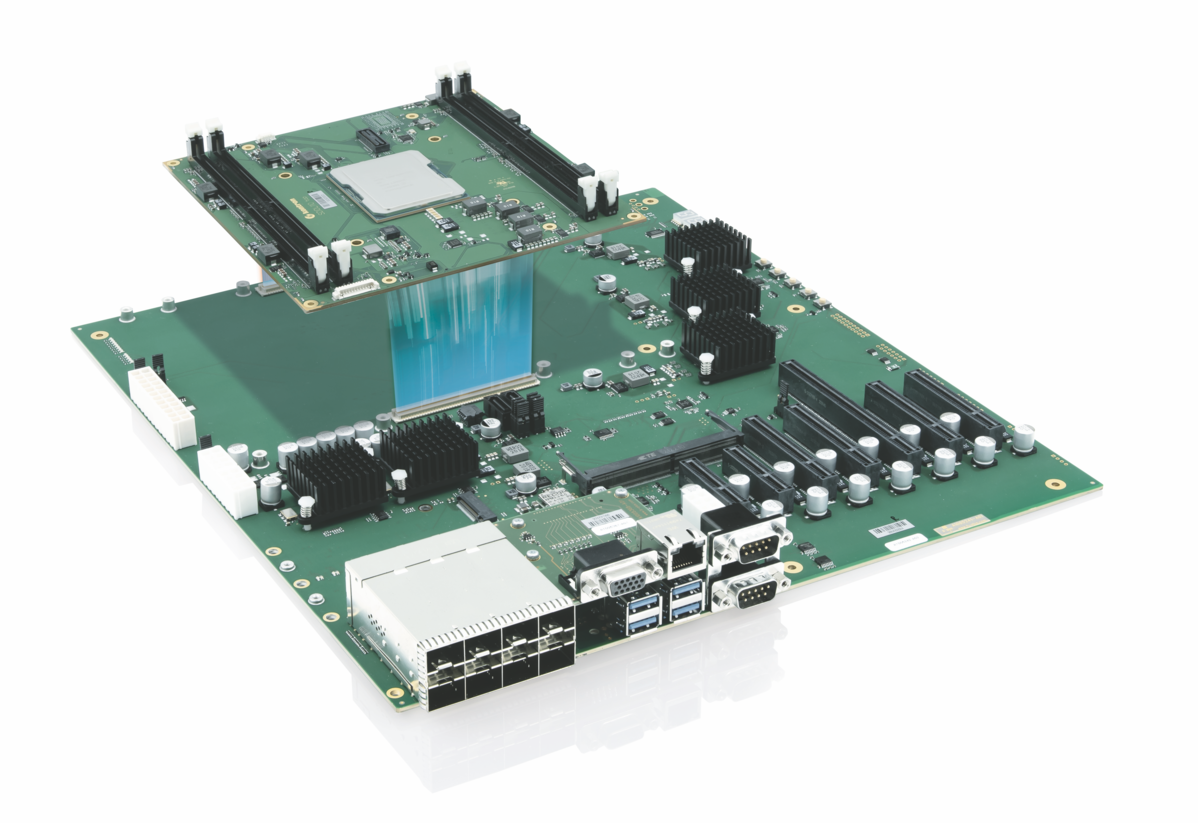Martin Unverdorben in conversation with Tobias Schlichtmeier (Elektronik) with courtesy of WEKA Verlag also available here on the Kontron Blog.
As Product Manager, Martin Unverdorben is responsible for Computer-on-Module product families at Kontron. He is also actively involved in standardisation in the respective committees. In this interview, he explains why computer modules are indispensable and how developers acquire the necessary know-how.
Mr Unverdorben, as product manager at Kontron you are responsible for Computer-on-Module (CoM) product families. For years, these have been among the favourites without which an embedded project is no longer conceivable. Why is that?
Martin Unverdorben: Computer-on-Modules are one of the best compromises when developing a new electronic device. There are three ways to create the core of the device. Either using a single-board computer (SBC) or motherboard - taking the board out of the box, connecting all the cables and installing it in a housing. However, this way you cannot customise the board functionally or mechanically. The second option is a full custom design, which, however, is only worthwhile with very high quantities - this is rarely the case with industrial applications. Thus, the third option is the perfect compromise: a Computer-on-Module. With a CoM, developers gain a great deal of flexibility - even for quantities of a few hundred to 10,000 units.
Kontron has been relying on computer modules according to standard form factors for years, and has been heavily involved in standardisation in the various committees. Why do you think standards are superior to proprietary form factors?
When we designed the first standard for computer modules, we were still a very small company. With standardisation, that changed. Because CoMs represent the very heart of an electronic device – and this is what every developer needs the most. If developers rely on proprietary modules that they are only able to get from a certain company exclusively, that is a single source. This lacks security. If the company no longer exists, the developer will not get a replacement for his module.
On the other hand, standards guarantee that there is at least one second source. With this, a developer achieves a longer lifetime for the devices and can always switch to a module from another company - while using the same carrier board.
COM Express in particular has shaped the last decade like no other standard. What is so special about it?
COM Express is currently one of the earliest standards on the market - its predecessor ETX is disappearing just now. COM Express covers a very wide range of performance classes - from Intel's Atom and Core-i processors to server-class processors with COM Express Type 7. Since COM Express has been around since 2005, it is the most widely used standard.
Let's move on to the newer standards. Especially COM-HPC and Open Standard Module (OSM) are very popular. Do you think COM-HPC can replace COM Express in the long run and what is the situation with OSM?
I am not sure that it is really the task of COM-HPC to replace COM Express. COM-HPC should rather be understood as a complement to COM Express. The big advantage of COM-HPC is its usability in the high performance classes.
The situation is different with OSM, here the development goes exactly in the other direction. OSM will replace SMARC projects in parts, for example in the area of small projects based on the Arm architecture, where OSM fits better. This cannot be assumed in principle, but there will be certain overlaps.
In your opinion, what is the advantage of a solder-on module compared to a plug-in module?
A solder-on module always makes sense when the price is decisive, because developers save the expensive plug-in costs. However, development and maintenance are more difficult to implement with a solder-on module because the module cannot be easily replaced. A solder-on module always requires time-consuming desoldering - or even worse: replacing the entire carrier board.
In the case of developers starting a new embedded project without knowing how to begin: What would you advise them to do? What points are essential to clarify before starting the project?
First of all, I have to clarify which computing power and which interfaces my device needs. Then I have to look at the documentation of the various Computer-on-Module standards that come into question. For each standard there is a specification and a design guide. The specification defines the standard electrically and mechanically, and also explains what options the standard offers. The design guide explains how to design a carrier board. In addition, there are training courses that cover such topics. Here, developers can learn about the different standards.
Can developers acquire the necessary knowledge for the design of a carrier board or an embedded product with such training?
Of course - for example by attending the training course: "Computer-on-Modules - from Selection to Carrier Board Design" in the course of the WEKA Graduate Program. The aim of the training is to give developers and decision-makers in the embedded sector the opportunity to decide for themselves which option is best for achieving the perfect result. If developers already have Computer-on-Modules in mind for their project, the training can help them decide on the right module. In addition, developers learn what things they need to pay attention to when designing the carrier board.
Thank you very much for the interview, Mr. Unverdorben.



{{comment.comment}}